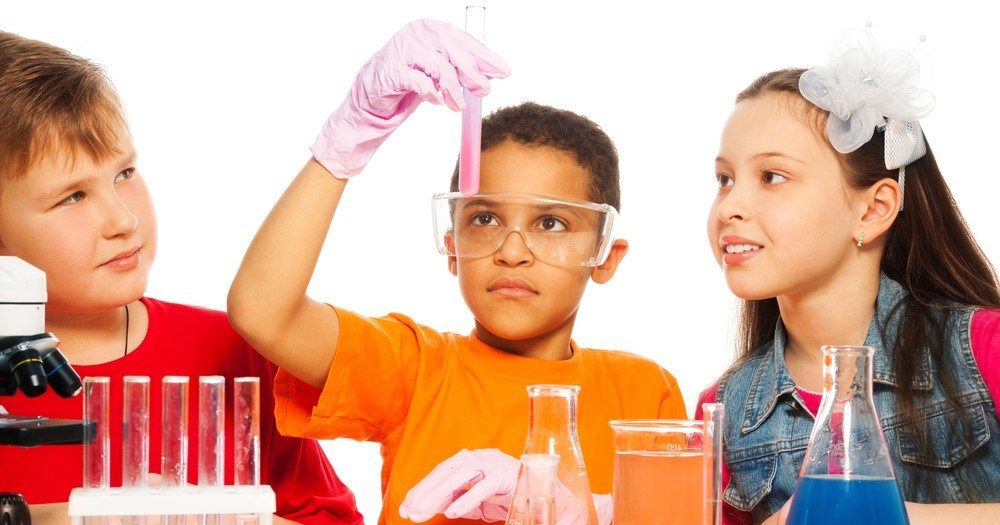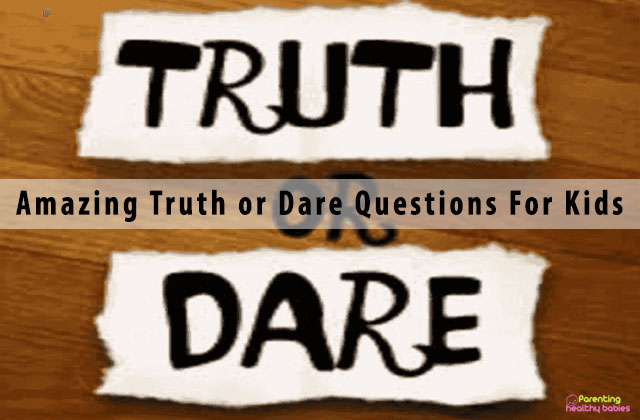Make up some Oobleck, Grow a bean in a jar, Floating eggs, Mixing oil, water and detergent, Make a volcano, Making music with water, Make gravity free water, Invisible ink with lemon juice are some of the exciting science experiments for kids.
There’s actually not much difference between kids and scientists. Their knack for curiosity drives them to explore and experiment things. We can see kids doing all sorts of things like blowing bubbles in the bath water or plugging out the wires only to stuff it back somehow.
You can encourage them by searching exciting science experiments for your kids and this would help them learn new concepts and also by getting familiar to the science world. Let’s see a few science experiments which are pretty easy to do, with good concepts to learn and materials easily available.
21 Easy Science Experiments for Kids
Make up some Oobleck
Oobleck is a non-Newtonian fluid that can act like a solid when a force is acting on it or acts like a liquid while it’s being poured down. This is a fascinating experiment for kids as they can play with this fluid/solid and also learn something about the states of matter of substances.
Materials needed – 1 cup water
- or 2 cups of cornstarch
- Food colouring (optional)
Method
- Add water in the bowl. Then start adding cornstarch while stirring it with a spoon.
- You can also use your hands for mixing and this makes it all the more fun.
- Make sure that it is of uniform consistency.
- You can also add food colouring to play around with it.
Now the Oobleck is ready to be played with. Grab a handful and squeeze it to watch it pour down from your fingers or just punch it hard.
Grow a bean in a jar
This teaches how a single bean can grow roots and stem in a jar, called as germination with just little water and no other external nutrients required. You can also place one jar in light and other in dark and show how in both the jars the bean grows as it proves light is not necessary for the growth of the bean.
Materials needed – A clear jar, A napkin, A bean and water
Method-
- Place the damp napkin inside the jar. Make sure the jar is well moisturized by spraying it with water.
- Place the bean seed on the napkin.
- Keep it moisture by spraying water and watch it grow in a few days.
Read More: 52 Simple Experiments For Kids
Floating eggs
What happens when you put an egg in a glass of water? It sinks. Right, let’s see what happens when we add some salt to this.
Method
- Fill a glass half with water and add around 6 tablespoons of salt. Mix it thoroughly.
- Now fill the other half of glass with water making sure that they do not mix.
- Now place the egg in the glass.
You can see that the egg sinks through the upper half of glass and floats in the middle. It is because of the fact that denser the liquid, easier it is for an object to float. Salt increases the density of water and hence egg floats on it.
Mixing oil, water and detergent
Some liquids just don’t mix. That stands for water and oil. You can take this experiment one step further by using detergent.
Method
You can add food colouring to the water if you wish to. Take 2 tablespoons of this and 2 tablespoons of oil in a soft drink bottle.
Mix them as hard as you can.
You will see that they do not mix. This is because water molecules are aggregated among themselves and so are the oil molecules. When we add detergent to this, it helps to join them all together which is called as an emulsion. This is why dishwashing liquids help in washing greasy dishes.
Make a volcano
Create an explosion using vinegar and baking soda (not baking powder) in your house.
Method
Place some baking soda in a container. Use a container to avoid making a mess.
Pour in some vinegar
Stand back to watch the explosion
The baking soda is a base while vinegar is an acid, when they react they form carbonic acid which is unstable so it release water and carbon dioxide. Carbon dioxide produces the fizzling effect. You can put in your creative skills to even make a volcanic mountain.
Making music with water
Try making music with just water, glasses and a wooden pencil
Method
Place 5 glasses or more. Fill the first glass with least amount of water and the last to be filled completely with water. Fill the glasses in between with increasing amounts of water.
Now hit the glasses with the pencil to make a tune
When you hit the glass, small vibrations are made that create sound waves that travel through the water. More water means slower vibrations and deeper tune.
Use a balloon to amplify sound
Use a balloon as a conductor to amplify small sounds.
Method
Blow a balloon.
Place it next to your ear and lightly tap it.
You observe that a slight tapping sound produces a large noise. It is because when you blow the balloon the air molecules are closely approximated and this acts as a good conductor to amplify the sound.
Make gravity free water
What happens when you hang your glass of water upside down? It falls. But try this experiment to defy this.
Method
Fill the glass with water
Place the cardboard over it such that no air bubbles enter as you hold onto the cardboard.
Now turn the glass upside down and see it defy gravity.
With no air inside the glass, the air pressure from outside the glass is greater than the pressure of the water inside the glass. This extra air pressure manages to hold the cardboard in place.
Invisible ink with lemon juice
Make your own invisible ink and write out secret messages.
Method
Squeeze some lemon juice in a bowl and dilute it by adding water.
Using a cotton bud write your message on a paper.
Let it dry completely
When you want to read the message, allow the paper to heat up by placing it in front of a light bulb.
Lemon is an organic substance that oxidizes and turns brown when heated.
Bucket spinning
When you spin a bucket half filled with water, you’d expect for yourself to get wet and little water to remain in the bucket. Try out this fun experiment to see what happens.
Method
Fill half the bucket with water.
Stand clear of people or objects around you in an open ground
Hold the bucket by its handle with your arm extended and start spinning it by your side towards the sky and back to the ground in a circular motion, making sure to spin it fast enough to keep the water inside the bucket.
The experiment employs, ‘centripetal force’ which is a force acting on an object moving in a circular path, directed towards the centre around which it is moving. As you spin the bucket, you feel that it wants to fly off in a straight line away from, this is a demonstration of Newton’s first law of motion that an object will continue in a straight line unless an outside force acts upon it.
Make frozen air bubbles
When the temperature drops to single digit Fahrenheit outside try out this fun experiment.
Method
Make your own homemade bubble solution by mixing 6 cups of water, 1 cup corn syrup and 2 cups clear dishwashing soap. Mix them and make sure not to form any bubbles.
Take some of this solution in a shallow dish.
Use a bubble wand to blow over this solution.
Watch as it forms little ice crystals and freezes. Pop it to see the sides crumple instead of just vanishing in the air.
Diet coke and mentos
Mix diet coke and mentos and stand back to watch the explosion.
This could be explained as the carbon dioxide in the coke and the little dimples found on mentos react to explode.
- Learn about surface tension by dropping food colouring into milk and watch as the colours move when you dip cotton bud which was prior dipped in dish soap.
- Make a duck call by cutting the ends of a straw into a point, then blowing.
- Build a miniature windmill using a few simple objects, and watch it spin faster or slower based on the direction of the “blades.”
- Polish pennies with lemon juice.
- Lemon juice contains acid which causes the pennies to shine. This can be applied even for cleaning water taps and other metallic items found in the house.
- Bounce a ball on top of another to watch how the energy transfers to the top ball and leaves the bottom one “dead.” This teaches them what happens in collision and the application of momentum in physics.
- Make static electricity by rubbing balloons on clothing or shuffling on the carpet with socks, then zap someone with a quick touch or hold it on your hair to see it sticking.
- Have your kids close their eyes and hold their nose and see if they can still identify foods by taste. They can learn by this that sense of smell is also helping in tasting the food.
- Fold a paper airplane and then bend a corner to see how that changes its flight path.
- Grow mold on bread by putting slices of bread in different environments (in a bag in the dark, in a bag in the sunlight, out in the open, in the refrigerator); see which one gets moldy first.
References
http://www.sciencekids.co.nz/experiments.html
https://mommypoppins.com/kids/













